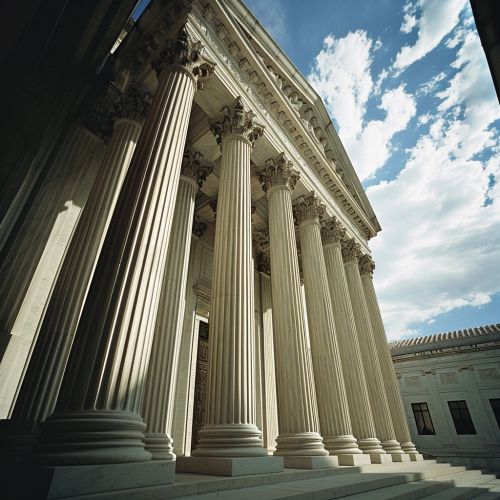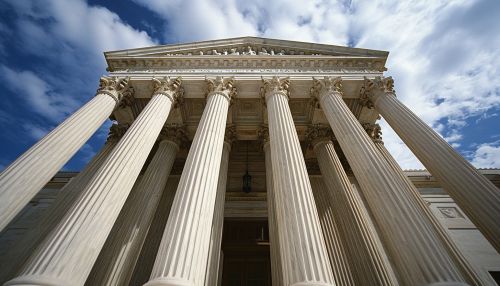Judicial Branch
Overview
The Judicial Branch is one of the three branches of government in the United States, alongside the Executive Branch and the Legislative Branch. It is responsible for interpreting the laws and constitution of the country, ensuring that they are applied fairly and justly. The highest court in the judicial branch is the Supreme Court, which has the final say on matters of federal law.


Structure
The judicial branch is composed of a hierarchy of courts, each with its own specific jurisdiction and responsibilities. At the top is the Supreme Court, followed by the United States Courts of Appeals, United States District Courts, and other specialized courts such as the United States Bankruptcy Courts and the United States Tax Court.
Supreme Court
The Supreme Court is the highest court in the land, with nine justices who are appointed for life by the President of the United States and confirmed by the United States Senate. The court's primary function is to hear and rule on cases that challenge the interpretation of the United States Constitution or federal law.
United States Courts of Appeals
The United States Courts of Appeals are the intermediate appellate courts in the federal judicial system. They hear appeals from the district courts and, in some cases, from federal administrative agencies. There are 13 circuits in total, each covering a specific geographic area.
United States District Courts
The United States District Courts are the trial courts of the federal court system. They have jurisdiction over federal cases, including both civil and criminal matters. There are 94 district courts across the country, each serving a specific geographic area.
Specialized Courts
There are also several specialized courts within the judicial branch, including the United States Bankruptcy Courts, which handle bankruptcy cases, and the United States Tax Court, which deals with disputes regarding federal income tax.
Role and Responsibilities
The primary role of the judicial branch is to interpret and apply the law. This involves hearing cases, making rulings, and issuing judgments. The judicial branch also has the power of judicial review, which allows it to declare laws or executive actions unconstitutional.
Interpreting the Law
The judicial branch interprets the law in order to resolve disputes and ensure justice. This involves applying the law to the facts of a case and making a judgment based on that application.
Making Rulings
When a case is brought before a court, the judges or justices make a ruling on the matter. This ruling is based on their interpretation of the law and the facts of the case.
Issuing Judgments
Once a ruling has been made, the court issues a judgment. This is the final decision in a case and is legally binding.
Judicial Review
The power of judicial review allows the judicial branch to review the constitutionality of laws and executive actions. If a law or action is found to be unconstitutional, it is nullified.
Impact on Society
The decisions made by the judicial branch have a profound impact on society. They shape the interpretation of the law and can set precedents that influence future cases. The judicial branch also plays a crucial role in protecting the rights and liberties of individuals.
Challenges and Criticisms
The judicial branch, like any institution, faces challenges and criticisms. These include concerns about judicial activism, the politicization of the courts, and the length of time it takes for cases to be heard and decided.
